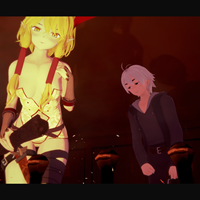"Assassin's Creed: 10 Historical Twists"
Ubisoft has once again fired up the Animus, this time transporting players to Japan's tumultuous Sengoku Period with Assassin’s Creed Shadows. Set in 1579, the game introduces historical figures like Fujibayashi Nagato, Akechi Mitsuhide, and Yasuke, the African samurai who served under Oda Nobunaga. As with previous entries in the series, these characters are intricately woven into a narrative that blends historical facts with fictional elements, spinning tales of revenge, betrayal, and murder. However, the notion of Yasuke needing to gather XP to wield a gold-tier weapon is a playful nod to the game's fictional mechanics, not historical reality.
Assassin’s Creed is known for its genre of historical fiction, where the developers craft compelling science fiction conspiracy stories around a secret society's quest for power, leveraging the mystical abilities of a pre-human civilization. While the series' open-world environments are meticulously researched and rooted in history, it's crucial to recognize that they are not intended as history lessons. Ubisoft creatively alters historical events and facts to enhance the storytelling, resulting in numerous "historical inaccuracies" that add to the game's allure. Here are ten instances where Assassin’s Creed has notably rewritten history:
The Assassins vs Templars War

The central conflict between the Assassins and the Templars is entirely a fictional construct. Historically, there's no evidence that the Order of Assassins, established in 1090 AD, ever engaged in a prolonged war with the Knights Templar, formed in 1118. Both groups did exist during the Crusades, but any interactions were not rooted in ideological opposition as depicted in the games. The Assassin’s Creed narrative transforms these historical entities into eternal adversaries, a creative license that fuels the series' dramatic tension.
The Borgias and their Superpowered Pope

In Assassin’s Creed 2 and Brotherhood, the spotlight falls on Ezio's battle against the Borgia family. The game portrays Cardinal Rodrigo Borgia, later Pope Alexander VI, as the Grand Master of the Templars, which is purely fictional, given the Templars' non-existence in the late 15th century. The narrative embellishes the Borgias' historical reputation for corruption, portraying them as more sinister than historical accounts suggest. Cesare Borgia, in particular, is depicted as a villainous figure with no basis in fact, despite Machiavelli's nuanced views of him as a capable leader.
Machiavelli, Enemy of the Borgias

Assassin’s Creed 2 and Brotherhood also feature Niccolò Machiavelli as a key ally to Ezio and leader of the Italian Assassins. This portrayal contradicts Machiavelli's real-life stance, which favored strong authority over the Assassins' creed of fighting against it. Additionally, Machiavelli's diplomatic relations with the Borgias, particularly Cesare, were far more amicable than the game suggests, highlighting another creative deviation from historical records.
The Incredible Leonardo da Vinci and his Flying Machine

Assassin’s Creed 2 showcases a deep friendship between Ezio and Leonardo da Vinci, capturing the polymath's charismatic nature accurately. However, the game takes liberties with da Vinci's timeline, moving him to Venice earlier than his historical relocation to Milan. The game also brings to life da Vinci's designs, such as a machine gun and a tank, with no evidence of their construction in reality. The highlight, though, is the fictional flying machine Ezio uses, inspired by da Vinci's sketches but never realized historically.
The Bloody Boston Tea Party

The Boston Tea Party, a key event in the American Revolution, is dramatically altered in Assassin’s Creed 3. While the actual event was a peaceful protest with no casualties, the game turns it into a violent confrontation where protagonist Connor kills multiple British guards. Additionally, the game attributes the orchestration of the protest to Samuel Adams, a claim historians debate due to lack of conclusive evidence.
The Lone Mohawk

In Assassin’s Creed 3, Connor, a Mohawk, aligns with the Patriots against the British, a scenario historically unlikely as the Mohawk were allied with the British. While inspired by figures like Louis Cook, a Mohawk who fought with the Continental Army, Connor's story represents a "what if" scenario that drives the game's narrative, exploring themes of conflict and identity.
The Templar Revolution

Assassin’s Creed Unity offers a controversial take on the French Revolution, suggesting it was orchestrated by the Templars to create a food crisis and justify the Reign of Terror. In reality, the revolution was the culmination of years of social and economic issues, not a conspiracy. The game's portrayal simplifies and distorts the complex causes behind the revolution.
The Controversial Killing of King Louis 16

The execution of King Louis XVI is a pivotal moment in the French Revolution, and Assassin’s Creed Unity dramatizes the vote for his execution as a close call influenced by a Templar. In reality, the vote was decisively in favor of execution, and the game downplays the widespread public anger against the monarchy, presenting a softer view of the French aristocracy than warranted by history.
Jack the Assassin

Assassin’s Creed Syndicate reimagines Jack the Ripper as a rogue Assassin aiming to take over the London Brotherhood. This narrative twist transforms the historical serial killer into a power-hungry villain within the game's universe, exploiting the ambiguity surrounding the real Jack the Ripper's identity and motives.
The Assassination of the Tyrant Julius Caesar

Assassin’s Creed Origins reinterprets the assassination of Julius Caesar as a plot to thwart a proto-Templar's rise to power. The game misrepresents Caesar's political reforms, which aimed at land redistribution for the poor, and portrays his death as a victory against tyranny, ignoring the historical consequences that led to the fall of the Roman Republic and the rise of the Empire.
The Assassin’s Creed series meticulously blends historical settings with fictional narratives, creating immersive worlds that prioritize storytelling over strict historical accuracy. This approach to historical fiction allows for creative freedom that enriches the gaming experience, even if it deviates from the historical record. What are your favorite instances where Assassin’s Creed has bent the truth? Share your thoughts in the comments.





























